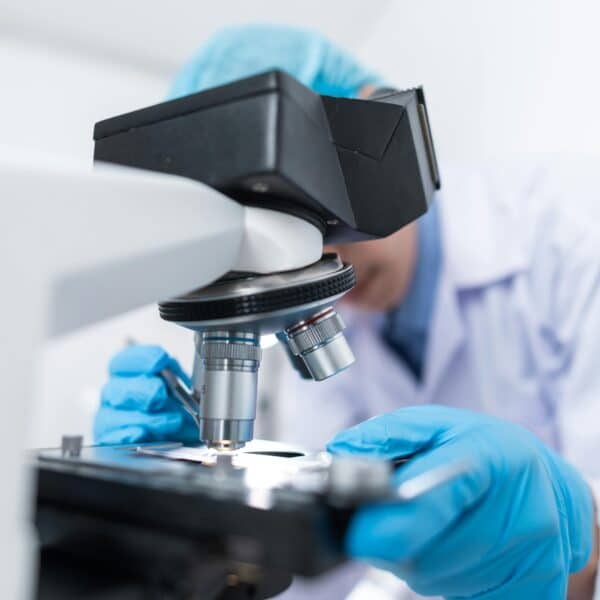MTRR and MTR Genes and the Methylation Cycle
Aira
on
May 24, 2024
Disclaimer: This article does not include all possible risk variants for the MTRR and MTR and is only for informational purposes. This article is not intended for diagnosis. Please talk to a healthcare professional if you have symptoms associated with these variants.
Why is the Methylation Cycle Important For You?
The methylation cycle is essential for numerous biological processes and overall health. Protein methylation detoxifies harmful substances, including heavy metals and toxins, thus protecting the body and supporting liver function.
Methylation also affects neurotransmitter production and regulation, influencing mood, cognition, and mental health. The methylation cycle helps regulate homocysteine levels, reducing the risk of cardiovascular diseases like heart disease and stroke. Furthermore, it is involved in energy production by synthesizing creatine and carnitine, both essential for metabolism and muscle function.
Finally, methylation modulates the immune system, supporting the production and function of immune cells, which are crucial for combating infections and diseases. The methylation cycle is fundamental to many aspects of health and well-being.
Importance of Healthy Homocysteine Levels
Homocysteine levels are significant because elevated levels of homocysteine, a sulfur-containing amino acid, are associated with an increased risk of cardiovascular diseases, including coronary artery disease, stroke, and peripheral arterial disease. High homocysteine levels can damage the lining of arteries, promote blood clot formation, and increase oxidative stress, all of which contribute to the development and progression of atherosclerosis.
Additionally, elevated homocysteine is associated with other health issues such as cognitive decline, dementia, and certain birth flaws. Monitoring and managing homocysteine levels through diet, lifestyle changes, and, in some cases, medication, can be crucial for maintaining cardiovascular health and preventing related complications.

Overview of the Methylation Cycle
The central theme of the methylation cycle is the conversion of homocysteine, the harmful substance, to methionine, an essential amino acid. The methylation cycle helps keep your homocysteine levels in check. As discussed in the earlier section, high homocysteine levels can lead to several health issues.
Here are the steps in the methylation cycle involving key enzymes and intermediates:
[1] Conversion of Serine to Glycine
- Enzyme: Serine Hydroxymethyltransferase (SHMT)
- Reaction: Serine + Tetrahydrofolate (THF) → Glycine + 5,10-Methylenetetrahydrofolate (5,10-MTHF)
[2] Conversion of 5,10-MTHF to 5-MTHF
- Enzyme: Methylenetetrahydrofolate Reductase (MTHFR)
- Reaction: 5,10-Methylenetetrahydrofolate (5,10-MTHF) → 5-Methyltetrahydrofolate (5-MTHF)
[3] Conversion of Homocysteine to Methionine [we are here]
- Enzyme: Methionine Synthase (MTR)
- Reaction: Homocysteine + 5-Methyltetrahydrofolate (5-MTHF) → Methionine + Tetrahydrofolate (THF)
- Coenzyme: Methionine Synthase Reductase (MTRR) keeps MTR active
[4] Alternative Pathway for Homocysteine to Methionine
- Enzyme: Betaine-Homocysteine Methyltransferase (BHMT)
- Reaction: Homocysteine + Betaine → Methionine + Dimethylglycine
[5] Conversion of Methionine to SAM
- Enzyme: Methionine Adenosyltransferase (MAT)
- Reaction: Methionine + ATP → S-Adenosylmethionine (SAM)
[6] Methylation Reactions
- SAM as Methyl Donor: SAM donates a methyl group to various substrates (DNA, RNA, proteins, lipids) and becomes S-Adenosylhomocysteine (SAH).
[7] Conversion of SAH to Homocysteine
- Enzyme: S-Adenosylhomocysteine Hydrolase (SAHH)
- Reaction: S-Adenosylhomocysteine (SAH) → Homocysteine + Adenosine
[8] Transsulfuration Pathway (Alternative route for homocysteine)
- Enzyme: Cystathionine Beta-Synthase (CBS)
- Reaction: Homocysteine + Serine → Cystathionine
- Subsequent Reaction: Cystathionine converts to cysteine and other metabolites.
MTR and MTRR in the Methylation Cycle
The MTR and MTRR genes enter the methylation cycle in the third step, which is the conversion of homocysteine to methionine. Methionine is an essential amino acid that plays a crucial role in various bodily functions, including the synthesis of proteins, which are the building blocks of our cells. Methionine is also vital for SAM, a compound that helps with methylation, detoxifies harmful substances, and supports overall cell function. Foods rich in methionine include meat, fish, dairy products, nuts, and seeds.
The MTR gene produces themethionine synthase enzyme crucial for the methylation cycle. This enzyme catalyzes the conversion of homocysteine, a potentially harmful amino acid, into methionine, an essential amino acid necessary for protein synthesis and other metabolic functions. Methionine is then converted into S-adenosylmethionine (SAM), a key methyl donor involved in numerous methylation reactions that regulate DNA synthesis, repair, and gene expression.
The MTRR gene, encodes for the methionine synthase reductase coenzyme which ensures the continuous activity of methionine synthase enzyme (encoded by the MTR gene). Methionine synthase can become inactive during the conversion of homocysteine to methionine, and methionine synthase reductase reactivates it, allowing the cycle to proceed smoothly. The MTR and MTRR genes maintain proper homocysteine levels and support the methylation cycle, which is vital for many cellular functions and overall health.
How This Can Affect You?
Polymorphisms in the MTR and MTRR genes can directly impact homocysteine levels, and can therefore influence many health aspects.
Some studies have found that risk variants in the MTR and MTRR genes are associated with difficulties using methylcobalamin, a form of vitamin B12, and producing methionine. Methylcobalamin is a coenzyme that helps convert homocysteine to methionine. Individuals with these risk variants may have lower B12 levels because the MTR enzyme uses B12 more quickly. Vitamin B12 is crucial for DNA synthesis, cell division, red blood cell formation, energy production, mood regulation, and other essential bodily functions. Additionally, those with the risk variants may have higher homocysteine levels, particularly if their B12 levels are low, and elevated homocysteine levels have been associated with an increased risk of cardiovascular problems.
A 2007 study examined the association between MTR (A2756G, rs1805087 A>G) and MTRR (A66G, rs1801394 A>G) gene polymorphisms and levels of total homocysteine in 275 healthy women in labor who delivered full-term normal babies. Results showed that the MTR and MTRR genotypes could predict total homocysteine levels, sometimes depending on the serum folate or cobalamin levels. However, women with MTR 2756AA had statistically significantly higher total homocysteine levels independently of the other factors.
Get your LifeDNA Methylation Genes report to understand your MTR, MTRR and other methylation gene polymorphisms in detail.
Optimize Your Homocysteine Levels Naturally
To optimize homocysteine levels through diet, focus on the following strategies:
- Increase Folate (Vitamin B9) Intake: Leafy greens (spinach, kale), legumes (beans, lentils), fruits (oranges, bananas), fortified cereals. Folate helps convert homocysteine into methionine, reducing its levels.
- Boost Vitamin B12 (Cobalamin) Intake: Meat (beef, chicken), fish (salmon, tuna), dairy products (milk, cheese), fortified plant-based milk or cereals. Vitamin B12 is crucial for converting homocysteine into methionine, helping to lower homocysteine levels.
- Consume More Vitamin B6 (Pyridoxine): Poultry (chicken, turkey), fish (salmon, tuna), potatoes, bananas, and fortified cereals. Vitamin B6 helps convert homocysteine to cysteine, another amino acid, lowering homocysteine levels.
- Increase Riboflavin (Vitamin B2) Intake: Dairy products (milk, yogurt), eggs, lean meats, green leafy vegetables, and fortified cereals. Riboflavin supports the activity of enzymes involved in homocysteine metabolism.
- Ensure Adequate Choline Intake: Eggs, beef liver, chicken, shrimp, and soybeans. Choline helps produce betaine, which aids in converting homocysteine to methionine.
- Limit Alcohol Consumption: Alcohol can impair the function of enzymes involved in homocysteine metabolism and exacerbate high homocysteine levels.
- Include Antioxidant-Rich Foods: Fruits (berries, oranges), vegetables (broccoli, bell peppers), nuts, and seeds. Antioxidants can help protect against oxidative stress, which may be high with homocysteine.
- Consider Omega-3 Fatty Acids: Fatty fish (salmon, mackerel), flaxseeds, chia seeds, and walnuts. Omega-3 fatty acids have been associated with lower homocysteine levels and improved heart health.
Incorporating these nutrient-rich foods into your diet can help maintain healthy homocysteine levels and support overall cardiovascular health. Always consult with a healthcare professional before making significant changes to your diet or starting new supplements.
References
*Understanding your genetics can offer valuable insights into your well-being, but it is not deterministic. Your traits can be influenced by the complex interplay involving nature, lifestyle, family history, and others.
Our reports have not been evaluated by the Food and Drug Administration. The contents on our website and our reports are for informational purposes only, and are not intended to diagnose any medical condition, replace the advice of a healthcare professional, or provide any medical advice, diagnosis, or treatment. Consult with a healthcare professional before making any major lifestyle changes or if you have any other concerns about your results. The testimonials featured may have used more than one LifeDNA or LifeDNA vendors’ product or reports.


















